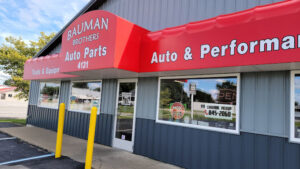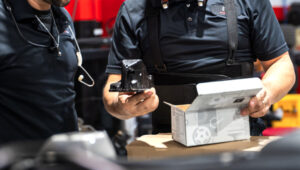Research shows that dealers’ DIFM share has risen over the past five years, with dealers recording one of the largest share gains among the major groups of repair outlets
Fort Wayne, Ind.—To attract older vehicles and more nameplates to their service bays, many dealers are offering DIFM pricing alternatives for selected vehicles. This strategy has gained momentum since the downturn in dealers’ bay volume following the 2008 Great Recession and, more recently, the 2020 impact of COVID-19.
“The all-makes, all-models bay strategy, which many dealers are embracing, can include dealers not using OE parts when servicing older models and nameplates they do not sell new,” states the latest Lang Aftermarket iReport. “This allows dealers to be more price competitive with independent (non-dealer) service outlets in the rapidly expanding Do-It-For-Me (DIFM) market.”
The following are key takeaways from the report.
Broader Bay Vehicle Mix
Many dealers are exploring alternatives to OE brands (which are generally more expensive than other aftermarket components) to appease consumers with older vehicles, who are often price-sensitive.
This policy can also support a broader mix of vehicle nameplates (in addition to what dealers sell new) in their service bays.
Two Developments Threatening Dealers’ Bays
The drop in new vehicle sales following the 2008 Great Recession and the effects of COVID-19 caused abrupt reductions in vehicles five years and under on U.S. roads (the primary vehicle age group serviced by many dealers).
The lack of newer vehicles also reduced warranty work, which has long been a mainstay of dealer bay activity. These two market convulsions motivated many dealers to expand the range of vehicle ages and nameplates they attract to their bays.
Three Parts Levels: Good, Better, Best
An increasing number of dealers are offering a “Good, Better, Best” parts selection for bay work on selected vehicles. This strategy enables dealers to attract a greater mix of vehicle ages and nameplates to their bays, significantly broadening their potential customer base.
• Best Parts: OE Brands
OE brands are considered the “Best” level of parts. They are generally used in the repair of younger models sporting dealer-sold nameplates.
• Better Parts: OE-Supplier Brands
Many dealers, especially those selling foreign nameplates, selectively use lower-priced “Better” brands from OE-suppliers, who often provide OE quality parts to the aftermarket. These parts are price-competitive with aftermarket brands and often are identical to OE brands in quality. In some cases, OE-supplier brands are provided to dealers by independent distributors authorized by carmakers. Otherwise, dealers buy them from aftermarket sources.
• Good Parts: Aftermarket Brands
Dealers increasingly use aftermarket brands as “Good” quality parts that offer competitive pricing (for older vehicles) and coverage for nameplates other than what dealers sell new. In addition, dealers often use aftermarket brands to recondition used vehicles, especially nameplates other than those they sell new.
Selective Labor Rates
Some dealers are expanding their pricing options for bay customers by including lower labor rates for older vehicles. With dealer labor rates reaching nearly $200 per hour in some markets, lower labor rates allow dealers to be price competitive with independent (non-dealer) outlets for work on older vehicles and nameplates they do not sell new.
Used Vehicle Market
The annual used-vehicle unit volume in the U.S. is over 150% greater than the new car and light truck market. Dealers increasingly use non-OE brands (OE-supplier and aftermarket brands) to refurbish used vehicles, particularly older models, and bring them to a resale state. Many dealers also use non-OE brands to refurbish used nameplates that they do not sell new and for which they do not have OE brands in stock.
Accordingly, non-OE brands are finding a fertile market among dealers in the expanding used-vehicle market.
DIFM Market Impact
These dealer strategies are having an impact on the DIFM market in the U.S. Lang Marketing’s research shows that dealers’ DIFM share has risen over the past five years, with dealers recording one of the largest share gains among the major groups of repair outlets. The expanding share of dealers has reduced the total DIFM share of independent (non-dealer) outlets.
Growing Potential for Aftermarket Brands
Dealers offer manufacturers and distributors of OE-supplier and aftermarket brands a growing potential customer base as they strive to increase their share of the DIFM market and cultivate the use of non-OE brands in the repair of older vehicles and nameplates they do not sell new. This can offset the downward sales pressure on OE-supplier and aftermarket brands, which has resulted from independent (non-dealer) outlets losing repair market share to dealers over the past few years.







Comments are closed.